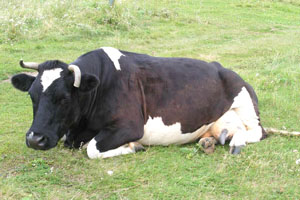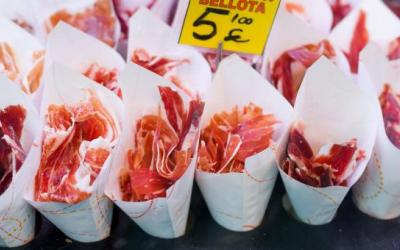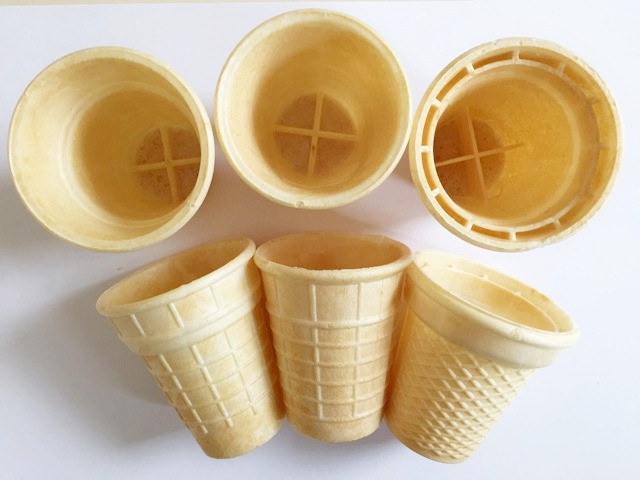Agro-Dubinskoe OJSC knows how to get extra-class milk
Agro-Dubinskoye OJSC holds a high bar among the farms of the Volozhin region from year to year.
And 2023 was no exception: grain yields, despite the vagaries of the heavenly office, exceeded 40 centners per hectare. Among the profitable industries is MILK , and in order for milk yield to be at a decent level, the main thing, as local farmers believe, is to feed the livestock well. Therefore, special attention is paid to the creation of a food supply. However, they are proud not only of high performance, but also of the workers who stand behind every success of the enterprise. The 7 Days correspondent met some of them personally.
Potential of Agro-DubinskyFrom MINSK to the agricultural town of Dubina-Boyarskaya, where the central estate of the farm is located, is less than 90 kilometers. We drive and involuntarily admire the landscapes: the forest gradually changes into an orange-yellow outfit, only evergreen spruce and pine trees stand out against the general background. The flat agricultural fields that stretch on both sides of our path are decorated with straw figures: castles, locomotives, emoticons, cows, piglets... This is where the art of creating unique creations from Belarusian straw reaches truly gigantic proportions! A little further – tractors and combines are working at full speed. And even though the hot suffering for farmers is already over, no one has canceled autumn work: plowing and winter sowing, harvesting beets and corn. it is precisely these tasks that we find employees of Agro-Dubinskoye OJSC performing.
While farm DIRECTOR Gennady Kasperovich is at a meeting in the regional center, his deputy Galina Leonova, who has only been working here for six months, volunteered to show the land, but she is not new to agriculture. We quickly load into her work car and HEAD off to the local frontline workers.
“Ivanovich, the press is visiting us, we’re coming to take pictures of the boys,” our guide quickly gives a command over the phone to the chief agronomist and, having received the answer “move along Vilenskaya towards the beet fields,” he presses the gas pedal.
Galina Viktorovna is not from the locals. She says to herself: a city woman who moved to the village and did not regret her choice. Born in Gomel, at the suggestion of her parents, after the 8th grade she entered an agricultural technical school, graduated from the Agricultural Academy, then received a diploma from the Academy of Management under the President. She worked for a long time in various positions in agriculture in the Gomel region. In April, she moved to the Volozhin region, where she managed to pass one of the most important tests - harvesting - together with the team of Agro-Dubinskoye OJSC. According to her, they are used to dealing with any tasks on the farm quickly and efficiently. She noticed this from the first days.
– The impressions are extremely positive. Everything comes from the director: how he set up the team, what result he aimed for. I have been in agriculture for 32 years, but I have never met such a leader as our Gennady Vatslavovich. In the foreground is the attitude towards people. Whatever questions you ask him, he is always ready to listen and help. And the workers reciprocate, it’s not for nothing that the enterprise has been listed among the regional leaders for years,” the interlocutor philosophizes and admits that there were many job offers: “I chose this particular farm, even if it was hundreds of kilometers from my small homeland.” Why? I always say: first you need to see if there is material to work with. So Agro-Dubinsky has enormous potential.
When there is too much work to doDuring the conversation, which is also interesting, time flies unnoticed. So we found the field we needed: on one side, beets have scattered their tops , on the other, plowing is in full swing for winter crops. We notice a dark Niva parked at the edge.
- The agronomist is on site. He’ll tell you everything about our field successes,” Galina Viktorovna smiles and immediately slows down dashingly.
There really is something to talk about. For example, about the yield this year, despite all the vagaries of the weather, reaching 40 centners of grain per hectare. Or about SUGAR beets and corn, which the farm pays serious attention to. The first is handed over to the sugar plant in Gorodeya, the second is used for feed and grain.
– The year turned out to be atypical for all cultures. There was a serious moisture deficit, especially during the period of plant formation. Take beets, for example. If on heavy lands the supply of productive moisture was more or less preserved, then on the sands there was an acute lack of water. The harvest there is completely different. In general, at the moment, the beet yield is more than 500 centners per hectare,” notes Peter Yezersky and talks about his long-standing tradition: “In the summer, when the beets are just gaining strength, I get up at 5 in the morning and go to the beet fields. Once or twice, an agronomist will walk through the dewy soil, take a look at the root crops - and lo and behold, the harvest is in order. It’s not like he drove up to the edge of the field, looked out of the car, and went back to the office. It won't do any good.With dry weather like this season, the results for other crops exceeded the expectations of local farmers. The harvest here was completed in 25 days. In the expanses of wheat, 11 crews at once squeezed horsepower out of their faithful friends, the combine harvesters. Almost each of them threshed the coveted thousand or more tons. True, the grain growers are still a long way from the finish line, when it will be possible to sum up the final results.
– In the fall there is, as they say, a ton of work. Now we are in full swing preparing the fields for winter sowing: we are plowing and applying mineral fertilizers. Winter rapeseed was sown at the optimal time. The first shoots have begun, which also need to be given a lot of attention: add growth regulators, treat them against diseases,” the chief agronomist shares his concerns. – In addition to beets, we have also started harvesting corn. I can already say that we predict a good harvest: we will have both grain and feed.
Milk comes firstBoth crop production and mechanization at Agro-Dubinskoye OJSC are primarily subordinated to the livestock industry. Milk is king here. It is “white gold” that brings significant profits. In total, the farm has 4 dairy farms and 3 dairy complexes with milking parlors. The total number of cattle is 4436, including 1700 dairy herds. The rest is cattle and young animals. This is due to the fact that they raise heifers here. Bulls are raised to 100 kilos and sold.
– Three complexes with different milking parlors, but identical technology. Milking is done three times a day: morning at 5:00, afternoon at 12:00 and evening at 19:00. For eight months of this year, the average daily milk yield per cow was 4,750 kg. If we take into account only August, the figures are at 649 kg. So, since the beginning of the year we have increased our milk yield by 508 kilos. I think that by the end of 2023 we will reach 7,100 kg, and next year we will reach the 8 thousand kilo mark,” the deputy director operates with figures as we approach one of the recently built MTC. – We started selling heifers, the first batch has already been shipped. The assessment, which affects the cost, is based on productivity, and the selection is based on zootechnical parameters, including constitution and breed. We are completely fine with this.
MTC "Dubina-Vershitskaya 800" was launched 1.5 years ago. We built the new complex on our own. Today the total livestock here is 800, of which 700 are cows. 13.5 tons of extra class milk are sold from here per day to the Nesvizh baby food plant. You understand what high demands the manufacturer has, but AgroDubinsk milk meets all the parameters.
– The plans for this complex are grandiose. Much has not yet been completed. For example, there will be another dispensary, as well as a milking shop. I think next year we will bring it to a closed-type complex,” explains Galina Leonova and focuses our attention on feed, without which it is unlikely to achieve the desired results in milk production: “The requirements are the highest . First of all, in terms of protein content. The phase of harvesting certain crops when preparing the food supply is also important here.
According to her, the farm produces more than enough feed from year to year. However, quality in this case is as important as quantity. The diet is prepared especially carefully. If necessary, the lack of the same protein is compensated for by other types of feed: rapeseed meal and cake. By the way, the farm has long switched to its own production of compound feed.
– We have our own recipes , so we know what ingredients are included, what grain. At the same time, the feed formula always contains about 25–30% of corn grain - these are sugars and carbohydrates, which subsequently affect the good digestibility of animal feed, and therefore their productivity, the deputy director clarifies.
Behind success are peopleOur excursion ended at the local canteen, where drivers and machine operators traditionally gather at lunchtime with their equipment. For those who work in the fields, hot meals are delivered directly there. We were also invited to lunch and were able to personally evaluate what the workers who demonstrate such impressive results are fed here.
The head chefs in the kitchen, Irina Chaenko and Lyudmila Koval, are already busy using scoops, pouring the aromatic first course onto plates. The menu includes pea soup, mashed potatoes with impressive-sized cutlets, and a salad of fresh cabbage and tomatoes. This set costs a farm worker only one steering wheel.
– We change the diet every day. We prepare borscht, various soups, stir-fries, cabbage rolls, and bake chicken. We do everything with soul, so that our dishes are in no way different from homemade dishes. We develop recipes, try to surprise,” the chefs smile, and after we taste the delicious cutlet, we understand that they succeed.
Finally, we decided to wait for the director. Moreover, Gennady Kasperovich is a legendary personality in agriculture. A strong handshake of a real business executive, kind eyes and a sincere smile - for some reason this is exactly how I imagined Gennady Vatslavovich, and also - one hundred percent knowledgeable about agriculture. Of course, he has been working at Agro-Dubinskaya OJSC since 1985. He immediately worked as an agronomist and has been heading this farm for almost 30 years. True, while noting successes and indicators, our hero was brief. And to be honest, what is there to retell here if we have already seen everything with our own eyes. The director wanted to talk much more about the team, to thank everyone for their daily work.
– To live well, you also need to work! Yes, the year was difficult, but when is it ever easy in agriculture?! Everything rests on a team of like-minded people - that’s what I can call my team. There are no small things in agriculture. Growing crops, preparing feed, ensuring high milk yields and weight gain - behind all this lies the daily work of each of us,” the manager sums up. – Almost 6.5 thousand hectares of arable land, about 8 thousand hectares of farmland - managing such a farm is not easy. But I’m not alone, I have people behind me in word and deed, whom I trust completely.
For eight months of this year, the average daily milk yield per cow at Agro-Dubinskoye OJSC amounted to 4,750 kg.
Marina VALAH
Photo by the author



























































